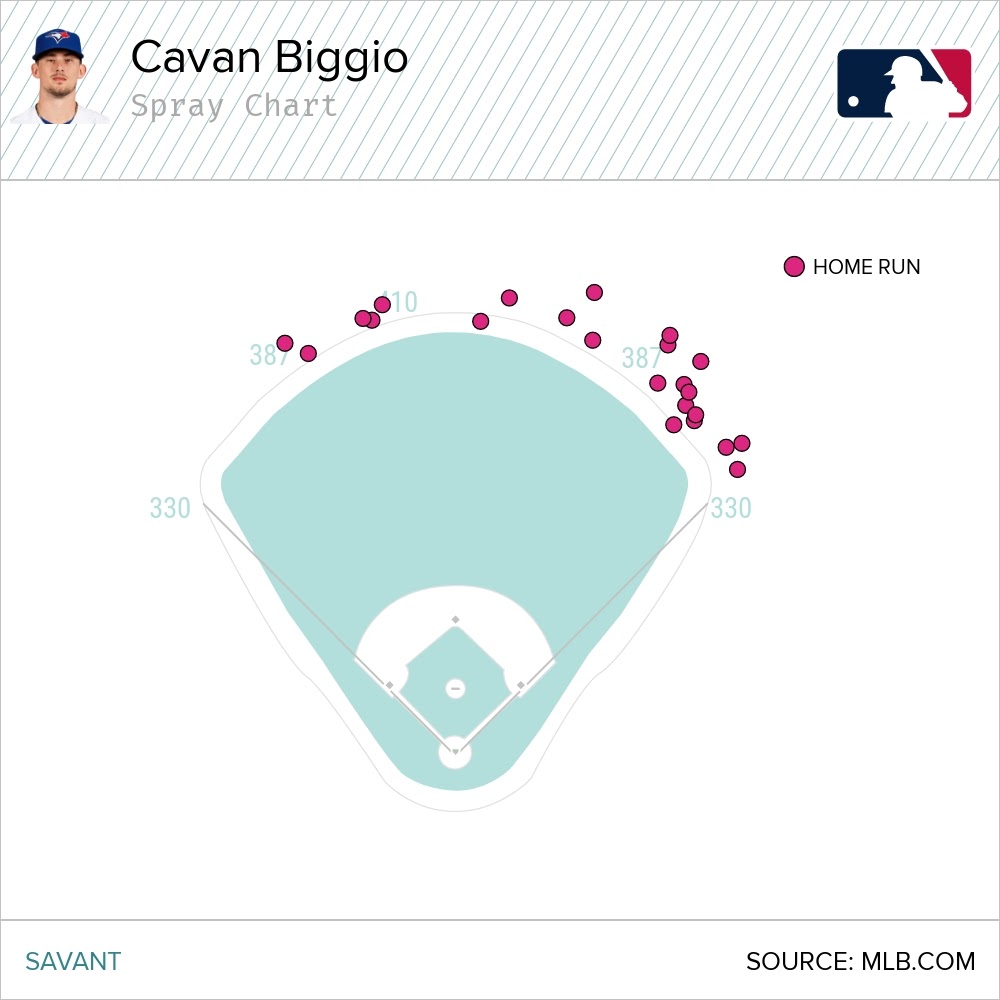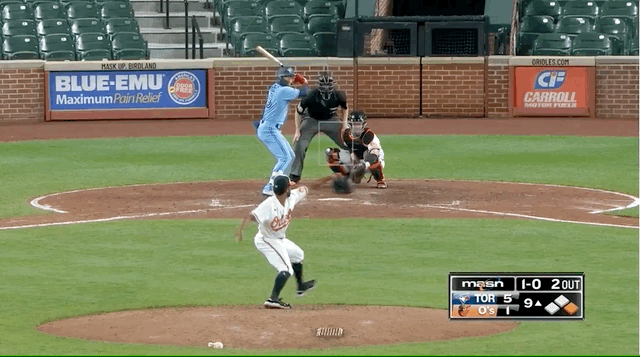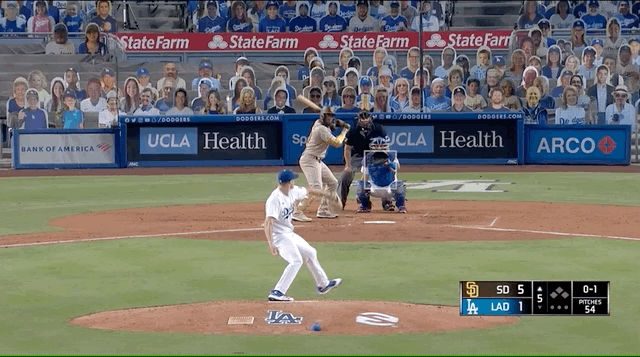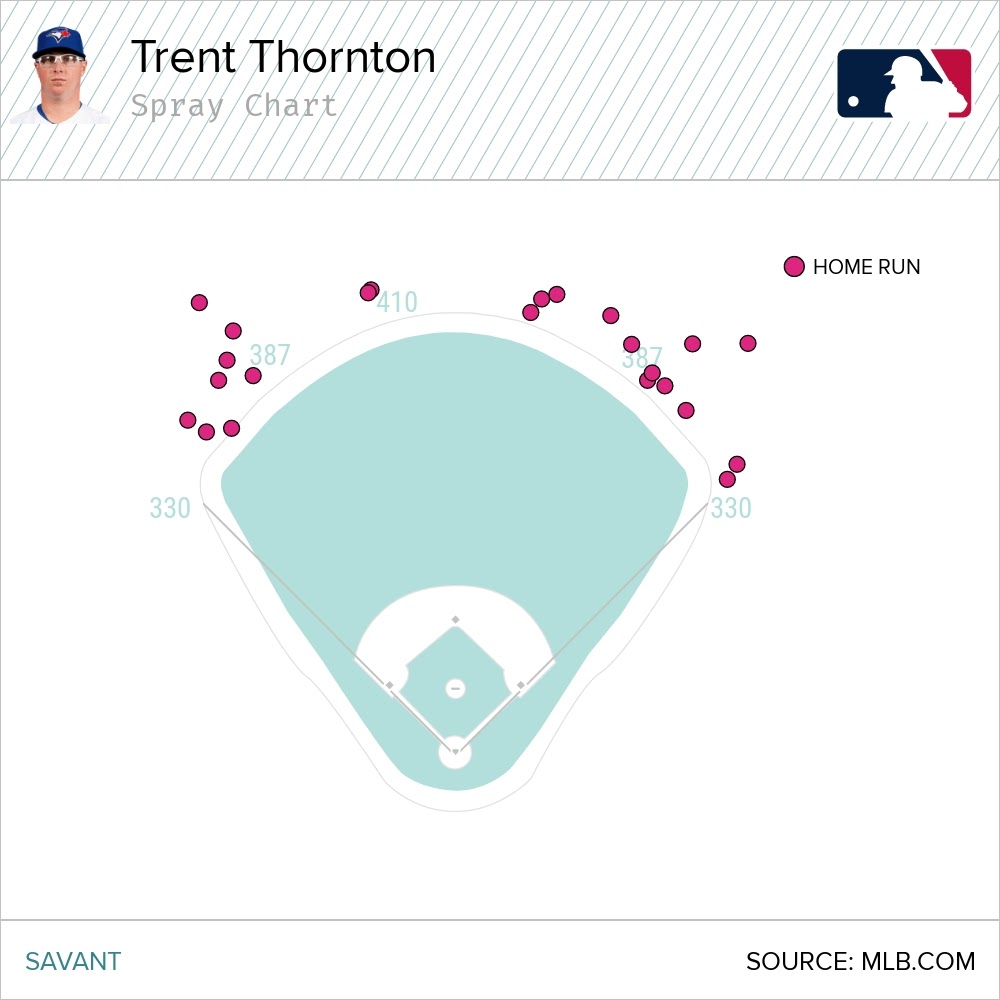While this MLB off-season included some exciting moments that shifted the league’s competitive balance — sprinkled amidst long periods of yawn-inducing inactivity — perhaps its most game-altering move came on Monday.
The league’s decision to “deaden” the baseball, could have a material effect on how this season unfolds. Although hitters will be hurt and pitchers will be helped in equal measure by this attempt to put an end to baseball’s home run surge, some players will be disproportionately affected by the new environment.
Rising home run rates in recent years provide a good example of how this works. When long balls became easier to hit we didn’t see anyone suddenly setting single-season records. That’s because guys who were good enough to sit atop the home run leaderboards didn’t need any help to clear the wall. If they connected well enough to get it out there, it was probably a few rows deep. Instead, it was hitters with “warning track power” like Scooter Gennett or Roberto Perez who popped off for 20-plus homer seasons. The rich didn’t get richer, there was just less deep fly inequality.
We don’t know exactly what’s going to happen with the latest alteration to the ball, but it feels fair to assume we’ll see something similar. The game’s biggest sluggers will be unimpeded while players with pop-gun power will see their inflated home run totals come to earth.
[snippet id=4722869]
The precise effect of the changes won’t be known until the season is underway (an analyst in the piece linked above estimated it would reduce total home run rate by five per cent), but based on what we do know we can make some educated guesses about which Toronto Blue Jays players will feel this change the most.
To do so, we’re going to use a few Statcast tools: “Doubters” and xHR from Baseball Savant’s home run tracker and Average Home Run Distance.
Distance is pretty intuitive. If a hitter consistently hits massive home runs (or a pitcher allows them), it seems unlikely that they’ll see their home run totals drop significantly due to a ball that’s slightly less lively.
Doubters are balls that would be home runs in seven or fewer stadiums, which makes them a good stat to look at — wall scrapers are precisely the type of batted balls a deadened ball could render harmless. Although the rates on a per-plate-appearance level are low (anything around two per cent is a lot), they add up over the course of a long season.
Lastly xHR, or the discrepancy between xHR and home runs, gives us an idea of who’s already hitting more or fewer home runs than expected based on the way they’re hitting the ball.
With all of that in mind, here are the Blue Jays who could be most affected by changes to the ball:
Cavan Biggio
Doubter rate: 2.0%
Average HR distance: 387.7 feet
Difference between xHR and HR: -3.7
Home run chart 2019-2020:

The home run chart really tells the tale as Biggio has been extremely prolific when it comes to clearing the wall by a narrow margin. It’s not surprising to see an xHR total significantly lower than his actual home run total based on what we see here. The super utility man hits a ton of fly balls just far enough, despite a lack of raw power. That profile could be in jeopardy with a deadened ball.
No one else in the Blue Jays’ expected starting lineup has an average home run distance lower than 399.8 feet, making Biggio stand out like a sore thumb. It seems likely that we’ll see a couple fewer looping round trippers from him that look like this:

The good news for Biggio is that power isn’t at the core of his offensive value. Even if you turned every four-bagger he’s ever hit into an out, his career OBP would still be .332, which is comfortably above the league average.
Marcus Semien
Doubter rate: 2.2%
Average HR distance: 399.8 feet
Difference between xHR and HR: -4
Home run chart 2019-2020:

Semien isn’t quite as obvious a new-ball victim as Biggio, but there are still some signs the change could impact him negatively. His average home run distance isn’t particularly impressive, his flyball rate is in the 73rd percentile, and he hit fifth-most Doubters in the league in 2019.
Looking at this chart, it seems like the 30-year-old’s ability to poke the ball over the right-field wall could be compromised. This home run off Joe Biagini, for instance, is about as much of a juiced ball shot as you’re going to see.

While it was always unfair to assume Semien could match his career-best total of 33 home runs with the Blue Jays, the deadened ball could put a thorn in the side of his bid for a bounce-back season.
Ross Stripling
Doubter rate: 1.8%
Average HR distance: 398.8
Difference between xHR and HR: +3.9
Home run chart 2019-2020:

Although Stripling didn’t impress in limited action with the Blue Jays, there are reasons for optimism with the veteran hurler. The 31-year-old has consistently struggled with keeping the ball in the yard, especially in 2020, but it seems like he’s been a bit unlucky. It’s clear he gives up more than his fair share of wall scrapers (his average HR distance allowed in the last two years is less than Hyun-Jin Ryu’s) and yet he’s often put up bloated HR/FB rates.

That’s especially tough for the right-hander to swallow considering only 20.1 per cent of the home runs he’s conceded over the past two years have been classified as “No Doubters” that would leave every park. For context, Ryu sits at 50 per cent in the same span with Robbie Ray topping the Blue Jays staff at 65 per cent.
A ball with a little less life could go a long way towards correcting this issue. It won’t turn Stripling into an ace, but it might leave him watching fewer head-scratching home runs like this Jurickson Profar mortar shot.

Trent Thornton
Doubter rate: 1.5%
Average HR distance: 400
Difference between xHR and HR: +3.4
Home run chart 2019-2020:

Thornton’s role in 2021 is a touch unclear at this point, as is the state of his elbow, but considering the type of attrition a pitching staff experiences over the course of a 162-game season, it seems likely the right-hander has a part to play for the Blue Jays.
The 27-year-old is precisely the type of pitcher who should enjoy a more mellow ball considering his extreme flyball rate (32.2 per cent) and the fact he’s been a touch unlucky with home runs thus far in his young career. While his HR/FB rate is better than average, the quantity of wall scrapers he’s conceded indicates there’s further room for improvement. His HR-xHR of 3.5 ranked first on the Blue Jays’ staff in 2019, only 37.5 per cent of his home runs allowed have been No Doubters. That’s not on Stripling’s level, but it still indicates a little bit of rough luck.
While we don’t know how much of Thornton we’re going to see, the extreme flyballer could be significantly more effective in a new run-scoring environment — one that wouldn’t allow the Niko Goodrums of the world to golf opposite-field home runs.

That’s the environment we could be living in this year. For some Blue Jays players it looks like it’ll be an enormous relief. For others, it could be brutal.
An obvious path for a team to shield themselves from the effects of this change is to run out a lineup full of sluggers who tend to clear the wall by a comfortable margin. Luckily for the Blue Jays, that’s a description you could apply to most of their lineup.
[relatedlinks]





COMMENTS
When submitting content, please abide by our submission guidelines, and avoid posting profanity, personal attacks or harassment. Should you violate our submissions guidelines, we reserve the right to remove your comments and block your account. Sportsnet reserves the right to close a story’s comment section at any time.